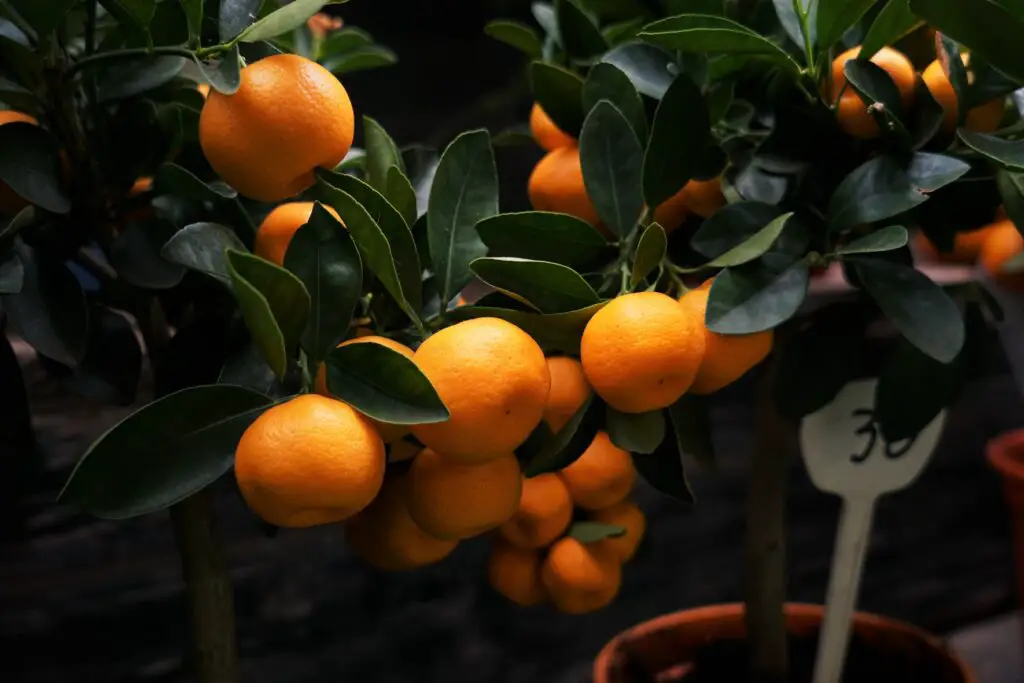Growing your own mandarins indoors can be a rewarding and delicious endeavor. Not only do mandarin trees provide an attractive addition to your indoor garden, but they also offer a fresh source of juicy, vitamin-rich citrus fruits right at your fingertips. Whether you have limited outdoor space, live in a climate unsuitable for mandarin cultivation, or simply wish to enjoy the satisfaction of growing your own fruit indoors, this comprehensive guide will walk you through the steps of successfully nurturing mandarin trees inside your home.

Table of Contents
Choosing the Right Mandarin Varieties
Before embarking on your indoor mandarin growing journey, it’s crucial to select the right variety that thrives well indoors. Some recommended mandarin varieties for indoor cultivation include the Satsuma mandarin (Citrus unshiu), the Clementine mandarin (Citrus clementina), and the Calamondin mandarin (Citrus × microcarpa). These varieties are known for their compact size, adaptability to indoor conditions, and flavorful fruits.
Selecting Suitable Containers
Selecting the appropriate containers for your mandarin trees is essential to ensure proper growth and development. Opt for containers that are at least 15 to 20 gallons (56 to 75 litres) in size, providing ample room for root growth. Ensure the containers have proper drainage holes to prevent waterlogging and the development of root rot. Additionally, consider using containers with wheels for easy mobility, as mandarin trees benefit from being moved to sunnier locations or to protect them from extreme temperatures.
Creating an Ideal Growing Environment
Mandarin trees thrive in bright, sunny locations. Place your indoor mandarin tree near a south-facing window where it can receive at least 6-8 hours of sunlight per day. If your home lacks sufficient natural light, supplement with grow lights to provide the necessary illumination. Maintain a temperature range of 60-85°F (15-29°C) for optimal growth.
Soil Selection and Planting
Choosing the right soil mix is crucial for the successful growth of mandarin trees indoors. Opt for well-draining potting soil or create a custom mix by combining equal parts of peat moss, perlite, and vermiculite. Avoid using garden soil, as it tends to become compacted and may hinder root development. Plant the mandarin tree at the same depth as it was in the nursery container, ensuring the root ball is adequately covered with soil.
Watering and Fertilising
Proper watering is vital for the health of your indoor mandarin tree. Water the tree thoroughly until excess water drains from the bottom of the container, but avoid overwatering to prevent root rot. Aim to keep the soil slightly moist, allowing the top soil to dry out between waterings.
Fertilise your mandarin tree with a balanced, slow-release citrus fertiliser during the growing season (spring and summer). Follow the manufacturer’s instructions for the appropriate dosage. Additionally, supplement with micronutrients such as iron and magnesium to prevent nutrient deficiencies, which can lead to yellowing leaves.
Pruning and Training
Pruning is essential to maintain the shape and size of your mandarin tree, encourage airflow, and stimulate new growth. Remove any dead, damaged, or diseased branches. Additionally, prune to shape the tree and maintain its compact size for indoor cultivation. Training the tree with stakes or trellises can also help create a desirable shape and maximise space utilisation.
Dealing with Pests and Diseases
While mandarin trees grown indoors are generally less prone to pests and diseases than their outdoor counterparts, it’s still important to be vigilant and address any issues promptly. Common pests that may affect indoor mandarin trees include aphids, spider mites, and scale insects. Regularly inspect your tree for signs of infestation, such as sticky residue, discolored leaves, or small insects. If you notice any pests, treat them with organic insecticidal soap or neem oil, following the instructions on the product label.
Diseases such as citrus canker, root rot, and powdery mildew can also pose a threat to your mandarin tree. To prevent diseases, ensure proper airflow around the tree by spacing it adequately from other plants. Avoid overwatering and make sure the containers have good drainage. If you notice any signs of disease, consult with a local gardening expert or horticulturist to identify the problem and implement appropriate treatments.
Harvesting and Enjoying Your Mandarins
The joy of growing mandarins indoors culminates in the bountiful harvest of delicious, homegrown fruits. Depending on the variety and growing conditions, mandarin trees typically start producing fruit within 1-3 years. The fruits should be left on the tree until they reach their full color and easily detach from the stem with a gentle twist. Harvest the mandarins by carefully picking them off the tree.
Freshly picked mandarins are bursting with flavor and nutritional value. Enjoy them as a refreshing snack, use them in salads or desserts, or squeeze them for a zesty citrus juice. The sweet aroma and tangy taste of your homegrown mandarins will undoubtedly elevate your culinary experiences.

Conclusion
Growing mandarins indoors allows you to experience the pleasure of cultivating your own citrus fruits, even in limited spaces or unfavorable climates. By selecting suitable varieties, providing optimal growing conditions, and following proper care techniques, you can successfully nurture mandarin trees within the confines of your home. The satisfaction of watching your tree thrive, blossom, and bear fruit is truly rewarding. So why not embark on this citrus-growing adventure and enjoy the freshness and flavor of homegrown mandarins throughout the year? Get started today, and savor the citrus delights that await you!
